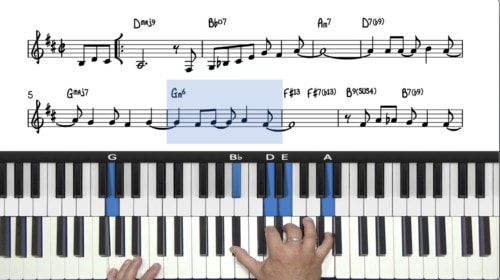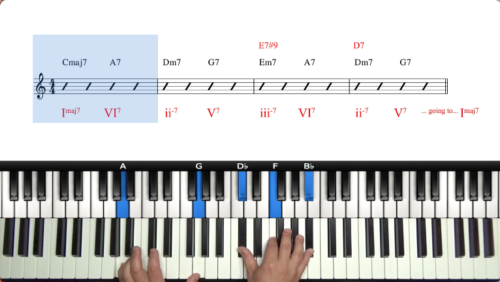Creating Solo Piano Introductions
In this lesson we explore the different ways to create solo piano introductions for the Brazilian jazz standards that we have covered here on PianoGroove.
As a pianist, we have a lot of creative freedom when creating our introductions and in this lesson we will explore some of the options available to us.
Using Common Progressions
We can base our introductions around common progressions that we have covered in the PianoGroove syllabus. Jovino creates improvised introductions using the following common progressions:
- 25s
- 251s
- 1625s
- 3625s
- 25 vamps
Introductions For Major Minor Keys
Jovino demonstrates how the same voicings can be used to create introductions for tunes written in major keys, and in minor keys. Major and minor keys have the same V7 chord, the difference is the colours, flavours, and tensions that can be applied to the basic chord structure.
We explore these different options for an introduction leading to D Major, and to D Minor.
Practice Tips
-
To create a simple introduction, take the first chord of the tune and 'backtrack' to add its 2 and 5 chords.
-
Experiment with chord qualities; we can have a minor 2 chord leading to a dominant 5 chord, or we can have a dominant 2 chord and a dominant 5 chord, also known as '5 of 5' or 'V of V'.
-
Explore tritone substitution for the V7 chord.
-
Extend this basic progression with the 1 chord to create a 1625 as Jovino demonstrates. Then try substituting the 1 chord for the 3 chord.
-
Playing the 3, 6, 2, & 5 chords as dominant voicings creates a beautiful cadence to lead us smoothly and convincingly into the first chord of the tune.
-
If we are accompanying a singer it's always a good idea to help set up the song giving the singer a hint about the style and tempo of the performance.







Interesting and really quite helpful! Thanks